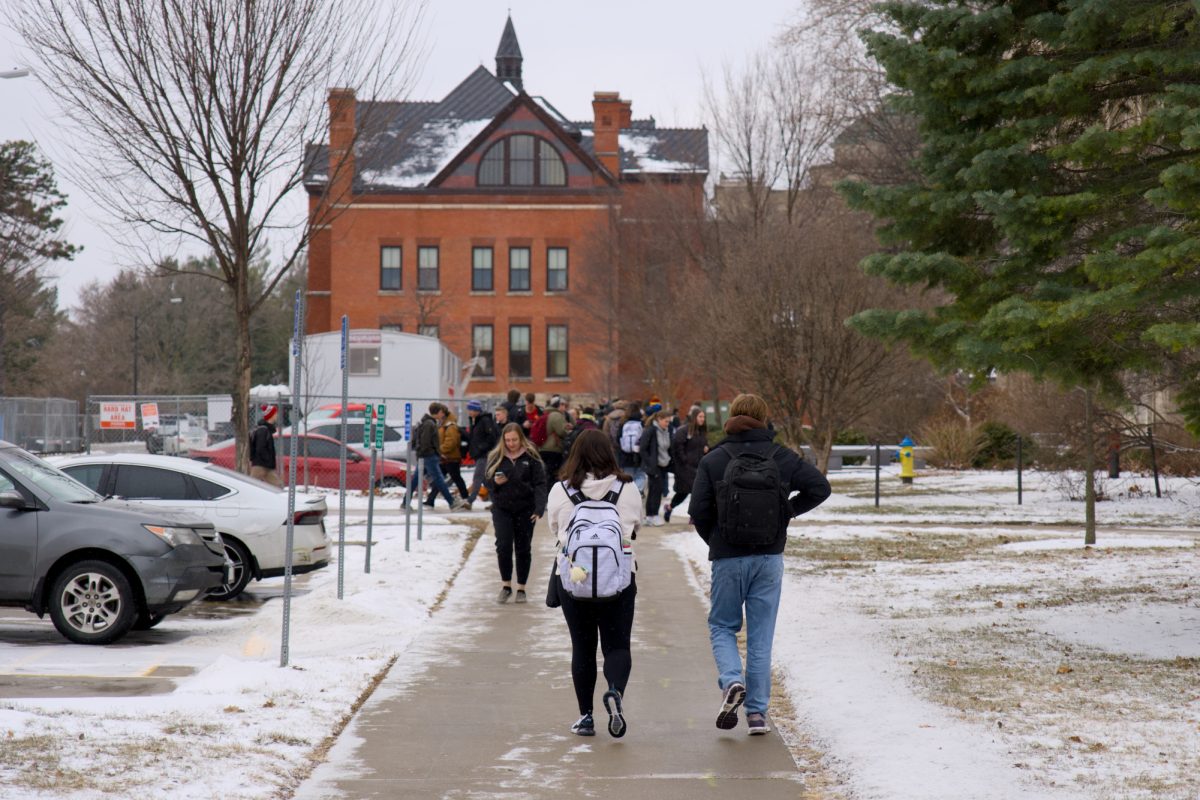Walk or don’t walk
January 11, 2006
It’s a few minutes before three on Monday afternoon. In a couple minutes, the students of Biology 314 will flood out of the Molecular Biology Building and onto Pammel Drive on their way home, to class or to work.
Just over a month ago, Robert Stupka, senior in biochemistry, was struck while crossing this patch of road, and died from the injuries he sustained. A memorial of flowers rests beside a fence and catches the attention of crossing students.
Lynette Elsbernd, junior in biochemistry, is among the students leaving the lecture. She said she just realized she needed to use the crosswalk in front of the building more often.
“I haven’t used it since the accident,” she said. “Maybe I’m a little scared, maybe I’m just a lot less comfortable. I’m going to use it now.”
Stupka’s death, along with the death of student Kelly Laughery, who was struck by a car on Mortensen Road, has elevated awareness of the importance of pedestrian safety on and around campus.
A group consisting of representatives from Facilities Planning and Management, the Center for Transportation Research and Education, ISU Department of Public Safety and the ISU Transportation Services advisory council will study seven potentially dangerous crossings on campus this semester. The group has retained two engineers from inside the university, and may begin to implement changes to unsafe areas as soon as in the next few weeks.
Doug Houghton, program manager for DPS, said the group has been in conversation for the past semester, but was catalyzed into action after the accidents.
“We wanted to come together and find out, ‘Is there some things we can do right now?'” said Houghton, a member of the research group. “Later on, we will look at the bigger picture.”
Catherine Brown, program coordinator for Facilities Planning and Management, is coordinating the efforts of the research group. She said they have already ordered new signs for areas around campus, but have not determined specifically where they will go. She said the engineers advising the group have suggested a consistent use of signs and street markings throughout campus.
“We think it will be a clearer message to motorists as well as pedestrians,” she said.
She said the group has been allocated $3,000 for the preliminary research and new signs, and more will be allotted as the group continues to research over the semester. Brown said new street markings would probably be put into place in the summer.
“The time frame we are working under is relatively short,” Houghton said.
According to DPS findings for 2004, the intersection of 13th Street and Stange Road was most common for accidents, with 20 last year. Houghton said Iowa State has already employed an engineering firm to investigate that area.
In face, the top 10 most accident-prone areas identified by DPS are not under scrutiny by the group.
“The sights we have picked have historically generated some complaints,” Houghton said. “The volume of pedestrian traffic at those locations would be a logical place to take a look.”
Houghton said the majority of vehicular accidents occur because of improper backing or failure to obey a red light.
Houghton also said Mortensen Road is controlled by three entities – the Ames Community School District, the city of Ames and Iowa State. The area in which Laughery was hit was on ISU property. The group is not dealing with that area at this time, however.
“This group is looking at intersections on [the central part of] campus,” he said.
John Joiner, director of Ames Public Works, said the city is going to install a shared-use walkway covering the area of Mortensen Road near the Laughery accident, which is a university-controlled area.
He said the project is scheduled to be completed by the end of 2006.
Ames Police Investigations Cmdr. Randy Kessel said most Ames accidents involving pedestrians occur on the west side of Ames where more students ride their bikes.
Kessel said pedestrians and drivers could help the situation by turning down MP3 players, shutting off cell phones and not putting on make-up while driving.
Potentially dangerous areas to be studied:
Pammel Drive near the Molecular Biology Building
Beach Road near the Forker Building
Two areas on Wallace Road on either side of the East Campus Parking Deck
Union Drive near the Union Drive Community Center
Pammel Drive near the Insectary
Beach Road by Maple Hall






